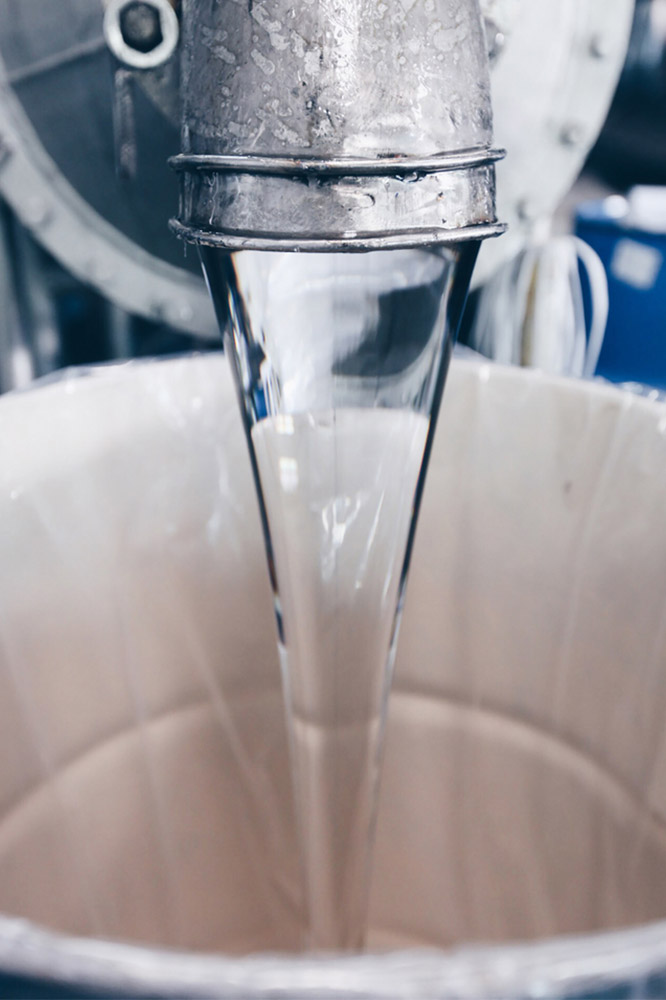For some years now, the use of hair oils as part of the hair care routine has been growing due to their benefits in addressing hair concerns, however, it’s important to understand the differences between the various types of oils available on the market and their ingredients in order to make informed decisions.
Hair oils can be formulated with synthetic ingredients, natural ingredients or both:
Synthetic Hair Oils
Composition
These are mainly constituted by silicones. Silicones are polymers widely used in the beauty industry, especially in skin care, color cosmetics, and hair care applications. Silicones work as an outer layer to cover damaged hair and make it look good.
Process
Silicones are synthetically manufactured polymers
Benefits
Their main benefit in hair care products is that they provide shine and excellent conditioning. They also help to reduce frizz.
Ingredients
Silicones can be found in any ingredient list. The common names are: Cyclopentasiloxane, Cyclomethicone, Dimethicone, Methicone, Amodimethicone, Dimethiconol.
Cost
They are relatively inexpensive ingredients. That is why many products with high concentrations of these ingredients are usually very affordable.

Natural Hair Oils:

Composition
As their name suggests, these oils are extracted directly from plants and trees, mainly from their seeds but sometimes also from other parts such as stems and leaves, with minimal human intervention.
Process
One of the best and commonly used extraction method is cold press. It does not require the ingredient to be heated or diluted with solvents in order to extract the oil. This minimal intervention protects the integrity of the nutrients and maximizes effectiveness when applying to our body.
Benefits
These natural oils are rich in Vitamins, Minerals, and Fatty Acids, which are vital elements in human cells, also present in our skin and hair. By allowing them to be absorbed by our scalp and hair, we are replenishing these vital nutrients and thus contributing to a healthy regeneration of our scalp and a healthy hair growth.
Ingredients
Usually, natural oils are disclosed using the binomial nomenclature (“two-term naming system”) of the species in Latin grammatical forms, together with the common name. For example Cocos Nucifera (Coconut) Oil.
Cost
The cost of natural oils can be even 40 times more than silicones, due to different factors such as:
- Availability: Some of these crops are very rare and grow in limited areas around the world.
- Location: Many grow in remote areas and the cost of production and shipping from the place of origin is expensive.
- Harvesting methods: Many of the crops are artisanally harvested without the use of agricultural machinery.
- Seasonality of the plant: The growth cycle of every plant varies and the yield is not always available throughout the year.
Natural and Synthetic Hair Oils:
Some products on the market combine both natural and synthetic ingredients in the same formulation, however, what counts is the percentage of each type of ingredient they contain.
Regulations to disclose ingredient content require those in a higher concentration to be listed first. So when you find silicones at the beginning of the list, it means that the product mainly contains those ingredients.
Our approach:
In line with HAIELLE’s philosophy, we stand for addressing the root of the problem, instead of only applying band-aid solutions. If your hair looks dry, damaged, dull or brittle, a deep treatment and the constant application of natural oils will provide a boost of nutrients to your hair and scalp and could be of great help to improve your hair concerns. Our Active Botanical Concentrate is a 100% Natural multi-purpose and silicone-free hair and scalp oil specially formulated with this approach in mind.
To learn more about the ingredients that we use, visit each product page, or write to us with your questions or feedback.



